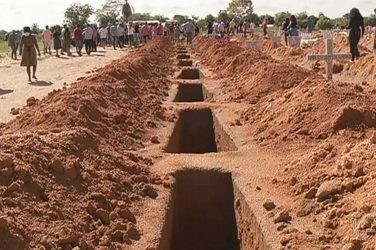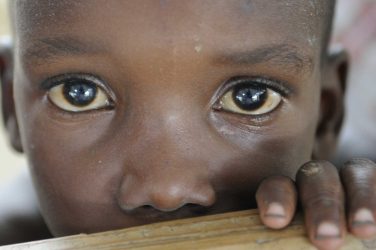Brazil’s Prosecution Service for Labor (MPT) is launching a national campaign against child labor. The initiative is supported by music and sports personalities and was given the hashtag #ChegaDeTrabalhoInfantil (Portuguese for “stop child labor”).
The program aims to encourage social media users to share the hashtag on their profile pages in support of the cause against the illegal work imposed on children and adolescents.
According to figures from the Health Ministry, from 2007 to 2015, a total of 187 children and adolescents died aged 5 to 17 while working in Brazil.
Another 518 youths lost their hand in a work accident, of a total 20,770 serious workplace accidents involving people younger than 18 years old. The International Labor Organization (ILO) estimates that 14.4% of people working in high-risk activities in Brazil are 15 to 17 years old.
“Child labor may be deadly and lead to mutilation, health problems, and further harm that may only become observable in adulthood. We must make a bigger effort to address the issue,” said Prosecutor Marcela Monteiro Dória, a representative from the National Coordination Against the Labor Exploitation of Children and Adolescents (Coordinfância).
The goal of the campaign, Dória said, is to overcome cultural barriers still to be found in child labor. “We want to take this discussion about the harmful effects of child labor to as many people as possible and urge them to join the cause by publishing and sharing the campaign’s hashtag and doing their part, since the Constitution stipulates that the protection of childhood is not a duty of the government alone. It’s also the responsibility of family members and society.”
Dória went on to stress that the purpose of the Prosecution Service for Labor is to eradicate the problem so that children can dedicate their time to playing and studying.
“We’ll strengthen the means of reporting the crime so that we can go and rescue these children who are being exploited,” she said.
Prevention in the Northeast
Children and adolescents are frequently found working in markets and slaughterhouses in municipalities of wild Pernambuco. This fact led the Ministry of Labor to file civil class actions against 13 municipalities of the region, which refused to sign a Conduct Adjustment Term to eradicate child labor.
According to prosecutor José Adílson Pereira da Costa, responsible for the case, the most grave situation is reported in slaughterhouses where minors are responsible for tasks like cutting viscera and catching animals’ blood. “It’s a very painful task, not every adult can do it. Imagine it for children. ”
However, according to Costa, in free markets we find the most frequent labor and the most difficult labor to combat, which is children and adolescents carrying customers’ shopping in wheelbarrows, which is called frete (freight).
“In these cases, the child works for society, not for a specific employer,” explains the prosecutor. When children are taken by their parents who usually also work in the market, it is easier to identify the person responsible for the illegal labor, but many of them are there alone, which hinders the oversight operation.
Children in this activity are on average aged 12 and 13 years, according to the prosecutor, but the Ministry of Labor already found 10-year-old children carrying customers’ shopping in wheelbarrows. “Often children carry more weight than their own body weight,” he declared.
The Law
Under Brazilian law, children under 16 are prohibited to work. They are only allowed to participate in apprenticeship programs from 14 years old. `
The law also forbids their work “in places, where their professional training, and their physical, mental, moral and social development may be harmed. They are also forbidden to attend working hours and places that do not permit their school attendance.”
In addition, Brazil also ratified Convention 182 of the International Labor Organization (ILO), which establishes the worst forms of child labor and actions to remove children from it.
“Just to begin mentioning, because of the weight carried, the sunny conditions, the accident risk, the task of carrying shopping is prohibited for children under 18 years old, for the load weight and unhealthy conditions,” said the prosecutor.
An argument often used by families is that the child needs to learn the task to get a job in the future and help pay household bills as soon as possible. But, in Costa’s view, this habit has the opposite effect.
“The child who works since early years repeats the cycle of poverty and will repeat it again with their family. They will have poor school performance, they will not be able to hold good positions in the labor market. The cycle can only be broken with a minimal support for families so that children do not have to work.”
Child Labor Rises
Child labor in Brazil rose 4.5% in 2014 compared to 2013, according to the Brazilian Institute of Geography and Statistics (IBGE). In 2013, there were 3.188 million children aged 5–17 years working, and that number rose to 3.331 million in 2014.
The data is part of a publication released by Abrinq foundation, which includes childhood indicators from official Brazilian agencies. According to the foundation’s Executive Administrator, Heloisa Oliveira, the purpose of the publication is to show how youth issues are interconnected.
“These are things that may not say much if taken alone. But when you look at the whole picture you see areas that need attention and development,” she said.
The child labor statistics had been on a downward trend before rising again in 2014. Oliveira sees this as an indication of interconnected problems.
“Families are having more difficulties making ends meet, and they are increasingly turning to their children for further income. This is a sign that social vulnerability is increasing. And what’s most worrying is that this data still does not reflect the economic crisis we have been facing [since 2015],” he said.
The report also provides Ministry of Education statistics showing that only 25.7% of children up to three years old were enrolled in day care centers.
“This is a very significant finding because it can be associated with other negative facts. If a mother who needs to work to support her family does not have a safe place to leave her child, that child is going to be much more vulnerable to situations of violence,” Oliveira said.
Downward Decade
The number of children and youth — from 5 to 17 years old — under child labor’s condition in the country has dropped more than 43% in ten years. In 2004, the number surpassed 5 million. While in 2014, according to the Ministry of Social Development and Fight against Hunger, 2.8 million children and youth were reported under such condition in 2015.
In addition to the drop in numbers, Tereza Campello, head of the ministry at that time, pointed out the profile change of child labor.
In an interview for the TV program Bom Dia, Ministro, from TV Brasil, the minister noted that the problem traditionally involved children who were not studying and families with very low income.
Child labor happens mostly among those over 14 who attend school, and belong to families earning a monthly income above the minimum wage per person.
“Brazil set a new world benchmark for combating child labor, showing that it is possible to [implement] policies aimed at reducing child labor. Children above 14 years are now working in cities, they go to school, and very often work with their own family,” she said.
Campello says the challenge now is to regulate young people’s work. She noted that before 13 years old, they are prohibited to work by the Federal Constitution. However, between 14 and 15 years, they are allowed to participate in apprenticeship programs, as long as the youth continues at school.
From the age of 16, they are allowed to work under a formal contract, but they cannot work at night hours, or engage in hazardous or unhealthy work.
The minister pointed out the importance to file complaints against child labor’s conditions, particularly cases of irregular housework. She reported that this is the most difficult condition to detect, since the victim is “hidden” from society, in the employer’s residence.
Pledge to End Child Labor
In 2014, representatives from 25 countries have signed a Declaration Constituting the Regional Initiative for Latin America and the Caribbean Free of Child Labor. In the document they agreed to step up controls, pursue integrated public policies, and enhance relevant legislation in order to hasten eradication of child labor.
Gathered at the 18th American Regional Meeting of the International Labor Organization (ILO), in Lima, Peru, they discussed ways to achieve the goals set in the 2010 Hague Conference, aimed at eradicating the worst forms of child labor by 2016 and eliminating it altogether by 2020.
The declaration was signed by Brazil, Argentina, Bahamas, Bolivia, Chile, Cuba, Colombia, Costa Rica, Ecuador, El Salvador, Guatemala, Guyana, Haiti, Honduras, Jamaica, Peru, Mexico, Paraguay, Nicaragua, Panama, Dominican Republic, Suriname, Trinidad and Tobago, Uruguay, and Venezuela.
Laís Abramo, ILO director in Brazil, was at the meeting. She informed that “Latin America stands out for its commitment to eradicate child labor, but the problem is still very serious.” According to the ILO, 12.5 million Latin American children and adolescents aged between 5 and 17 currently work – 9.5 million of them in dangerous conditions.
According to Abramo, addressing this issue would require such policies as expanding compulsory schooling and providing full-time education and income transfer to the poor. Moreover, she believes that the “hard core of child labor” must be identified through more accurate figures on working children.
The document establishes international cooperation as the basis for the proposed efforts. In this regard, Abramo pointed out that Brazil has provided an inspiring model for other countries in America by allowing the civil society to play a more active role in monitoring and acting upon the issue.
According to the ILO, the number of boys and girls aged between 5 and 17 who work in Brazil has dropped 58% over the past 20 years.
ABr














